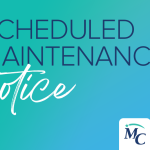Available Balance vs. Current Balance
Two of the most commonly confused terms used in the financial sector are “Available Balance” and “Current Balance.” Although these terms seem very similar, they refer to two very different things. Knowing the difference might just save you some money in fees.
Your available balance is the amount you can spend right now. To determine whether you have enough money in your account to cover a transaction, we use your account’s available balance which is based upon the deposits and withdrawals to your account and all pending electronic transactions, including pre-authorized transfers, point of sale transactions, and merchant payment authorizations (regardless of whether they have posted to your account).
Sometimes you’ll see an available balance that’s lower than your current balance. In those cases, you can only spend your available balance (or less if you have outstanding checks), and the rest of the money is being held by your financial institution. Current balances include all of your money, including all available funds PLUS funds that are being held.
For example, assume your available and current balance are both $50, and you swipe your debit card at a restaurant for $20. A hold is placed on your account, so your available balance is only $30. Your current balance is still $50. Before the restaurant charge is sent to us for processing, a check that you wrote for $40 clears. Because you have only $30 available (you have committed to pay the restaurant $20), your account will be overdrawn by $10, even though your current balance is $50. In this case, we paid the $40 check. You will be charged an overdraft fee. Instead of paying the $40 check, we could have returned the check and would have charged you a non-sufficient funds fee. The fees (overdraft or non-sufficient funds) will be deducted from your account, further reducing the balance.
Avoiding Cash Crunches
For the most part, you depend on your bank to release funds. However, there are ways to reduce the chances of your account running dry.
Direct deposit gets money into your account quickly. If your employer still pays you with a check, sign up for electronic payments so that the money goes directly from your employer’s bank account to your bank account. You don’t need to wait on the check (especially if it goes through the mail), and you don’t need to go to the trouble of depositing the check. As a bonus, the money might even hit your account a day or two before the checks are printed, and some banks offer same-day availability for those payments.
You can also keep a buffer of cash in your account to protect you from unexpected expenses and delays. If you’re always “running on fumes,” you’re eventually going to have a problem. A small cash cushion can help you avoid problems. If that’s not possible, look into overdraft protection, but only sign up if you’re going to use it as a safety net – don’t make a habit out of paying those fees – and use a less expensive overdraft line of credit if possible.














